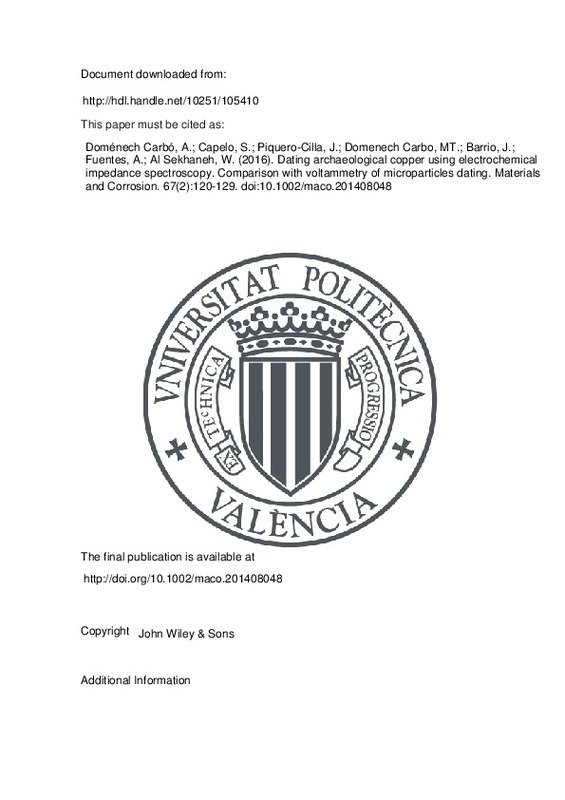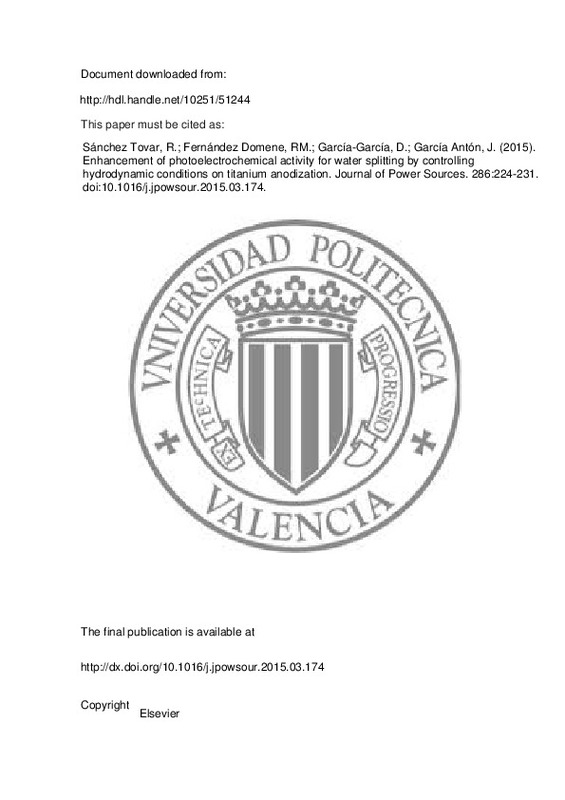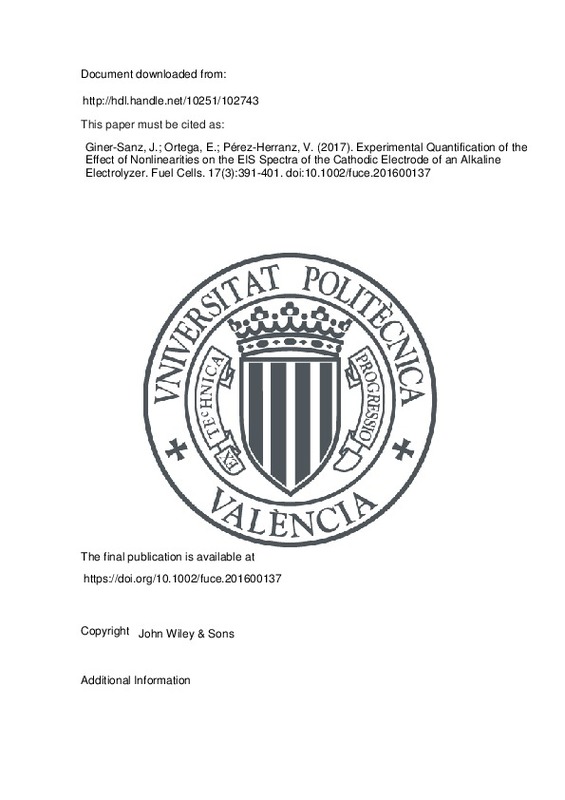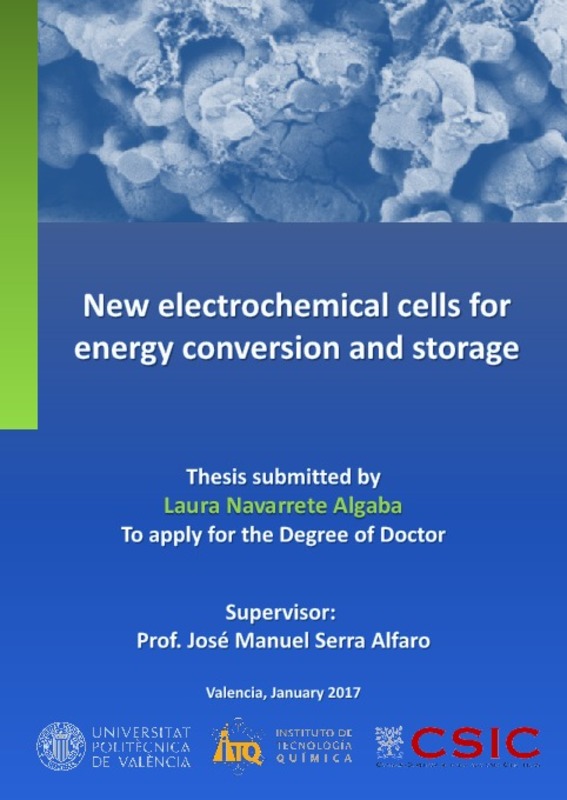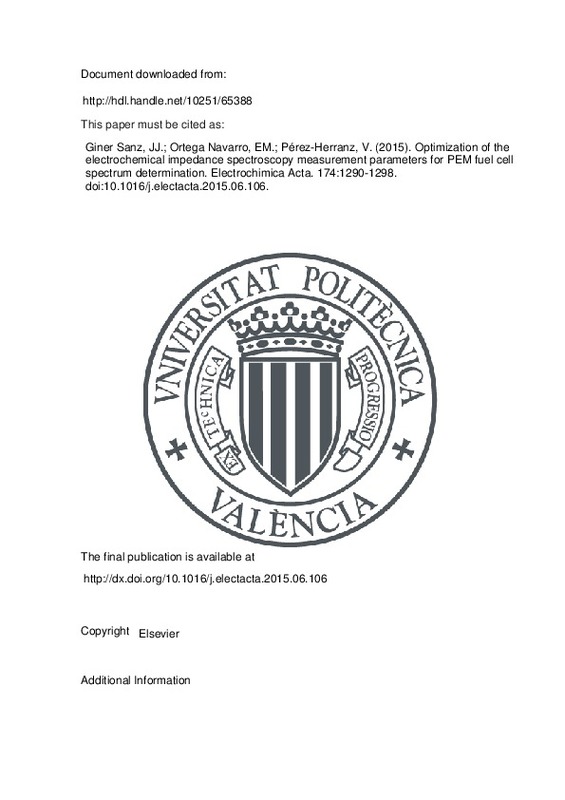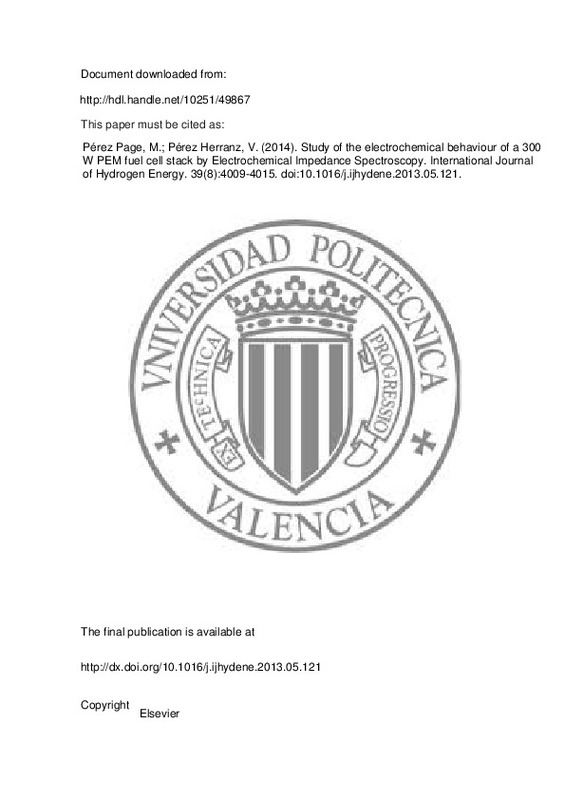

Listar por palabra clave "Electrochemical Impedance Spectroscopy"
RiuNet: Repositorio Institucional de la Universidad Politécnica de Valencia
- RiuNet repositorio UPV
- :
- Listar por palabra clave
JavaScript is disabled for your browser. Some features of this site may not work without it.
Buscar en RiuNet
Listar
Mi cuenta
Ayuda RiuNet
Admin. UPV
Listar por palabra clave "Electrochemical Impedance Spectroscopy"
Mostrando ítems 1-11 de 11
-
Domenech Carbo, Antonio; Capelo, Sofia; Piquero-Cilla, Juan; Domenech Carbo, Mª Teresa; Barrio, J.; Fuentes, A.; Al sekhaneh, W. (John Wiley & Sons, 2016)[EN] A methodology for dating copper/bronze archaeological objects aged under atmospheric environments using electrochemical impedance spectroscopy (EIS) is described. The method is based on the measurement of resistance ...
-
Navarro Laboulais, Javier José; Amigó Mata, Angèlica; Amigó Borrás, Vicente; Igual Muñoz, Anna Neus (Elsevier, 2017)[EN] Passivation kinetics is a crucial factor in the electrochemical behavior of passive metals and alloys when subjected to operating conditions in real systems such as biomedical devices or aeronautical applications. The ...
-
Domenech-Carbo, Antonio; Domenech Carbo, Mª Teresa; Montagna, Elena; Álvarez-Romero, Carla; Lee, Yu (Elsevier, 2017)[EN] An electrochemical methodology for discriminating monetary emissions, a recurrent problem in much archaeological studies, is introduced. The method is based on the record of voltammetric signatures of cuprite and ...
-
Sánchez Tovar, Rita; Fernández Domene, Ramón Manuel; García-García, D.M.; García Antón, José (Elsevier, 2015-03-31)This work studies the electrochemical and photoelectrochemical properties of a new type of TiO2 nanostructure (nanosponge) obtained by means of anodization in a glycerol/water/NH4F electrolyte under controlled hydrodynamic ...
-
Pérez Tordera, Tania (Universitat Politècnica de València, 2017-10-18)[EN] In this Master’s Degree final dissertation it was tried to examine the effectiveness of one of the products most used in the process of inhibition of archaeological objects of iron, such as tannic acid. As well as ...
-
Giner-Sanz, J.J.; Ortega, E.M.; Pérez-Herranz, V. (John Wiley & Sons, 2017)[EN] Electrochemical impedance spectroscopy (EIS) is a very powerful tool to study the behavior of electrochemical systems. According to Ohm¿s generalized law, the impedance concept is only valid if the linearity condition ...
-
Navarrete Algaba, Laura (Universitat Politècnica de València, 2017-03-03)In this thesis different materials have been developed to use them in electrochemical cells. The electrochemical cells studied can be divided into two material big groups: solids oxides and acid salts materials. In the ...
-
Giner Sanz, Juan José; Ortega Navarro, Emma María; Pérez-Herranz, Valentín (Elsevier, 2015-08-20)Currently, electrochemical Impedance Spectroscopy (EIS) is a widely used tool for the study of electrochemical systems, in general; and fuel cells, in particular. A great effort is typically invested in the analysis of the ...
-
Giner Sanz, Juan José; Ortega Navarro, Emma María; Pérez Herranz, Valentín (Wiley, 2016-08)One of the most important measurement parameters in electrochemical impedance spectroscopy (EIS) is the perturbation amplitude. The optimum perturbation amplitude value corresponds with a balance between the signal-to-noise ...
-
Pérez Page, María; Pérez Herranz, Valentín (Elsevier, 2014-03-06)Electrochemical Impedance Spectroscopy (EIS) is a suitable and powerful diagnostic testing method for fuel cells because it is non-destructive and provides useful information about fuel cell performance and its components. ...
-
Giner Sanz, Juan José; Ortega Navarro, Emma María; Pérez-Herranz, Valentín (Elsevier, 2015-12-20)Electrochemical Impedance Spectroscopy (EIS) is a widely used electrochemical measurement technique that has been used in a great spectrum of fields since it allows deconvolving the individual physic- chemical processes ...
Mostrando ítems 1-11 de 11

Universitat Politècnica de València. Unidad de Documentación Científica de la Biblioteca (+34) 96 387 70 85 · RiuNet@bib.upv.es


